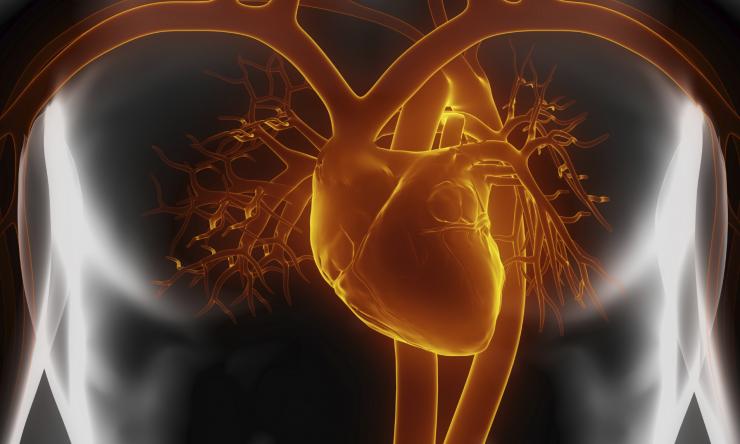New insights into heart's healing capacity
A group of researchers at Baylor College of Medicine, the Texas Heart Institute and the University of Texas Health Science Center at Houston reveals today in the journal Genes & Development new insights into the recently discovered healing capacity of the heart involving the Hippo cellular pathway. The group previously reported that inactivating the Hippo pathway in the adult murine heart promoted cardiac muscle regeneration after injury, opening the possibility of developing promising heart failure therapies.
In this study, the researchers discovered that inactivating the Hippo pathway in cardiac fibroblasts, non-muscle heart cells intertwined with cardiac muscle cells, promoted cardiac fibrosis and adversely effected cardiac function. These results highlight the need for targeting the Hippo pathway specifically in cardiac muscle cells, and not in cardiac fibroblasts, for safe and effective heart failure therapy.
“Heart failure remains the leading cause of mortality in the U.S., and one of the interests of my lab is to develop ways to heal heart muscle by studying cellular pathways involved in heart development and regeneration,” said corresponding author Dr. James F. Martin, professor and Vivian L. Smith Chair in Regenerative Medicine at Baylor and director of the Cardiomyocyte Renewal Lab at the Texas Heart Institute.
During a heart attack, blood stops flowing into the heart; without oxygen, part of the heart muscle dies. The heart muscle does not regenerate; instead it replaces dead tissue with a scar, made from cells called fibroblasts. If there is too much scarring, the heart progressively weakens; a large proportion of people who had a severe heart attack will develop heat failure and scarring in the heart.
In previous studies, Martin and his colleagues discovered that inactivating the Hippo signaling pathway in adult murine hearts triggered cardiac muscle cell regeneration after heart attack. These findings raised hope for the development of promising heart failure therapies involving the Hippo pathway.
In the current study, Martin and his colleagues further investigated the Hippo pathway in the adult murine heart, this time focusing on its role in cardiac fibroblasts, non-muscle cells that are closely associated with cardiac muscle cells. The researchers conducted a number of basic studies, including single cell sequencing experiments that provided a high level of resolution to their analyses.
“We inactivated the Hippo pathway in resting adult hearts that did not have any injury and observed that the fibroblasts became activated; they proliferated and developed into myofibroblasts, a major cell type that appears in heart tissues after an injury,” Martin said.
“Mouse hearts with a deficient Hippo pathway in cardiac fibroblasts spontaneously developed cardiac fibrosis, even without injury, which resulted in severe heart dysfunction,” said co-first author Dr. Yang Xiao, who was a postdoctoral fellow in the Martin lab during this project. “This and other evidence indicated that the Hippo pathway is required to restrain cardiac fibrosis; Hippo is important for maintaining the fibroblasts in their resting state.”
In addition, the researchers found that inactivating the Hippo pathway also triggered a molecular cascade resulting in an inflammatory response that was mediated by Yap, a molecule that regulates a number of molecular pathways.
“We know that Hippo and Yap work together. Hippo acts like a brake for Yap, so when we took away Hippo, Yap remained active and regulated the expression of important signaling molecules that ‘talk’ to macrophages and other immune cells luring them into the heart,” Martin said.
The researchers believe they have identified important insights into heart function. Their findings inform about the genetic pathways that are important for maintaining the fibroblasts in their resting state.
Other contributors to this work include co-first author Matthew C. Hill, Lele Li, Vaibhav Deshmukh, Thomas J. Martin and Jun Wang. The authors are affiliated with one or more of the following institutions: Baylor College of Medicine, the Texas Heart Institute and the University of Texas Health Science Center at Houston.
This study was supported by grants from the National Institutes of Health (DE023177, HL127717, HL130804, HL118761; F31HL136065; K01DE026561); American Heart Association (14SDG19840000), Vivian L. Smith Foundation, State of Texas funding, Fondation Leducq Transatlantic Networks of Excellence in Cardiovascular Research (14CVD01) ‘Defining the genomic topology of atrial fibrillation’. Further support was provided by Intellectual and Developmental Disabilities Research Center grant number 1U54 HD083092 from the Eunice Kennedy Shriver National Institute of Child Health & Human Development and the Mouse Phenotyping Core at Baylor College of Medicine (U54 HG006348).











